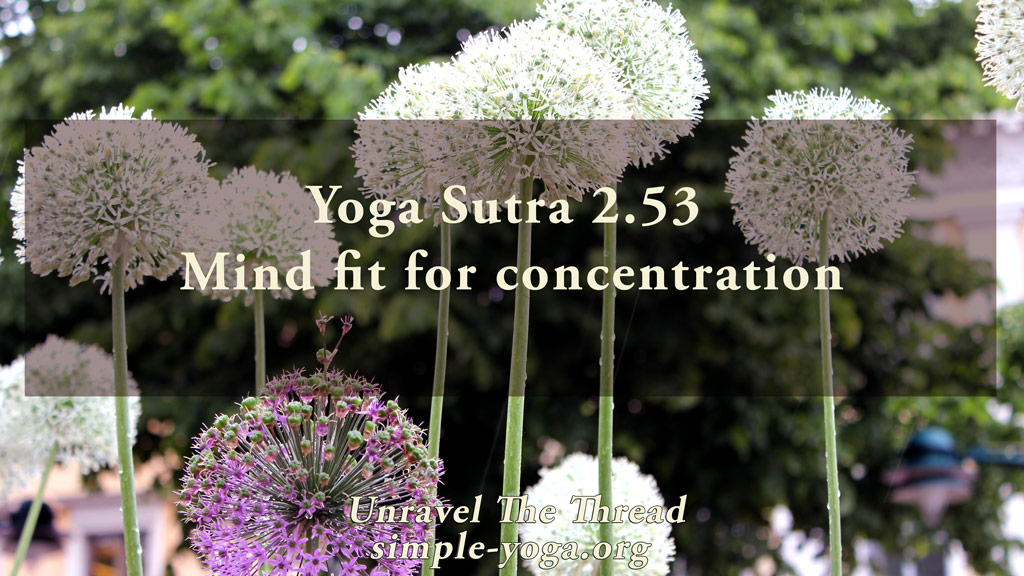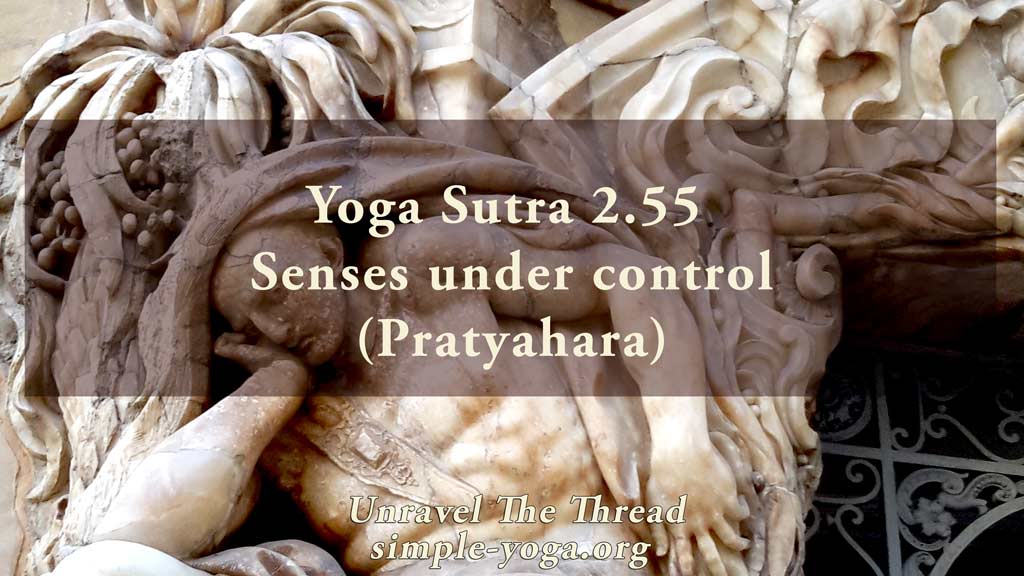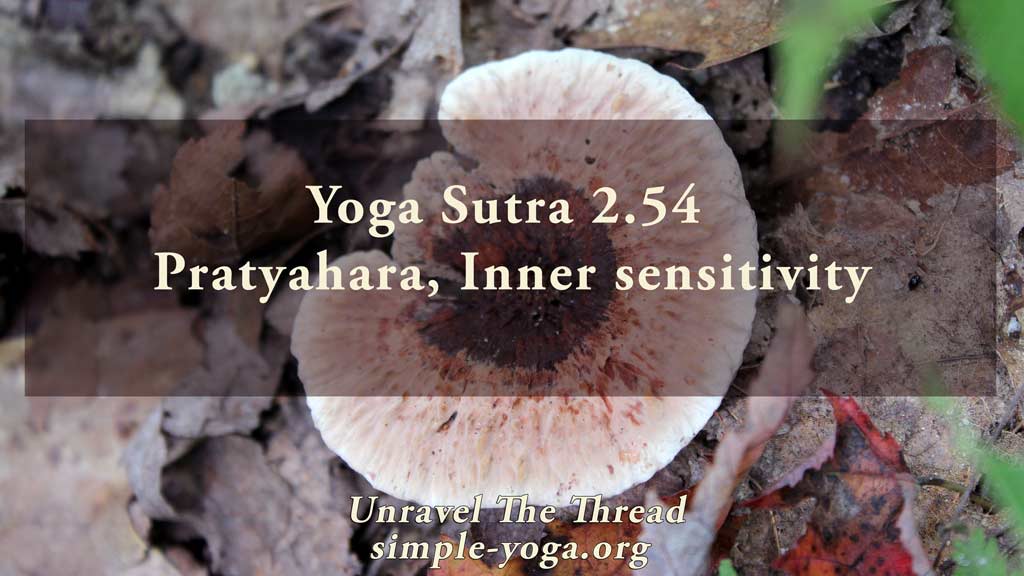
2.53 Mind fit for concentration
April 19, 2021
2.55 Senses under control
May 3, 2021
2.53 Mind fit for concentration
April 19, 2021
2.55 Senses under control
May 3, 20212.54 Pratyahara, inner sensitivity

2.54 Pratyahara, cultivating inner sensitivity to bring awareness into its own form.
The previous limbs of the yogic process are an invitation to focus internally. Generally, your senses are alert to the changing external phenomena. This is helpful so that you can orient to what is happening around you in order to respond intelligently to the changing circumstances in your immediate surroundings. However, to create internal harmony, it is also beneficial to be able to turn your attention inwards, to the ground of your being. Our human minds are highly responsive to sensory input, generally chasing after the stimuli gathered by the senses. Now that more than half of the population of the globe lives in urban environments, many of us find countless sources of sensory stimulation. Moreover, our technologies compound this situation by constantly delivering more stimuli in a variety of forms and media. In fact, it is fair to say that most of us are training our attention unconsciously to be highly responsive to external stimuli, shifting from one to another in rapid succession. This is not necessarily negative, if we are also able to disengage voluntarily from external stimuli. This is important. If we can’t focus our attention inwardly, we are training only one half of our full range of ability. The previous limbs of yoga have set up a solid foundation offering techniques to initiate the process of internal exploration. Just like it is possible to cultivate your olfactory sensitivity by training yourself to distinguish among different scents, it is also possible to train your ability to sense yourself from within. The practice of both asana and pranayama enhances awareness of the body, the respiratory processes, and their interrelations. Pratyahara is an organic continuation of this process.
Pratyahara requires a conscious decision to change the focal point for your senses from outside to inside. In a way, pratyahara is the process of redirecting your usual external activity, your doings, to merge into the state of being, just witnessing. Or, to switch from doing and thinking to being and feeling. Pratyahara leads you to research systematically your internal landscapes. One approach is to transition from outer orientation to inner orientation by deepening your sensitivity. You may start by consciously recruiting awareness into each sensory process so that you move from tasting to savoring, from hearing to listening, from seeing to observing, from touching to feeling and from awareness of smell to awareness of scent. In other words, you pay close attention to your sensations while withholding opinion and commentary by witnessing with curiosity and without expectations. Then, you remain focused on the subtler aspect of the perceptive process you are attending to in order to experience all possible nuances. As with all natural processes, this takes time, yet it can be an enlightening way of uncovering a whole range of experiences that were not within your awareness before.
You can continue this journey by following the path of any sensory stimulus from outside to inside as was suggested in sutra 1.35. Then you move further inward by developing sensitivity of your internal sensations. Curiosity about the myriad sensations making up your inner life provides the motivation and drive to continue along the inward journey. Some questions to guide you along the way:
How does it feel inside of you?
How are the sensations in your skin different on the outside and inside?
Can you follow a sound from outside to inside of you?
What are the natural sounds that are happening inside of you?
To what extent is it possible to feel your inhalations and exhalations from within?
Is it possible to feel your own blood flowing through your body?
What are all the places you can feel your own heartbeat?
What are the sensations inside your joints?
Can you feel your bones and the marrow within them?
What are the sensations in your eyes as light filters in through your closed eyelids?
Where do these subtler experiences lead you?
As usual, one more way of exploring the meaning of this sutra is by chanting it.
You can choose to chant it in its traditional form with some of the words coming together:
2.54 svaviṣayāsaṃprayoge cittasya svarūpānukāraivendriyāṇāṃ pratyāhāraḥ
स्वविषयासंप्रयोगे चित्तस्य स्वरूपानुकारैवेन्द्रियाणां प्रत्याहारः ॥५४॥
Another option is to chant each word in the sutra individually:
- sva
- viṣaya
- asaṃprayoge
- cittasya
- svarūpa
- anukāraḥ
- iva
- indriyāṇāṃ
- pratyāhāraḥ
If you prefer, you may listen to the podcast:
Unravel the thread is now available as a book!
If you find Simple-Yoga.org and Unravel the thread useful, consider supporting my labor with a donation, you may also donate using PayPal or Venmo. Thank you!
